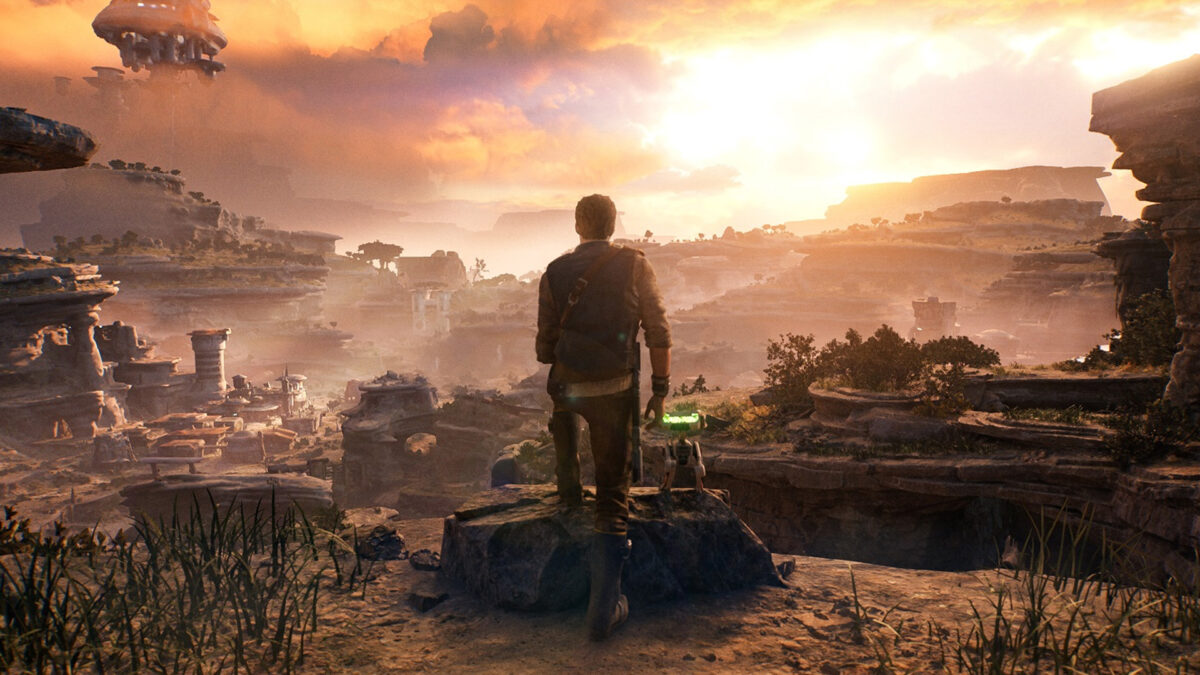For me, there’s nothing quite like being sidetracked from the game you’re playing by an entirely different game that lives inside it. The Witcher 3’s Gwent, Assassin’s Creed: Valhalla’s Orlog, Red Dead Redemption’s Five Finger Fillet, Yakuza: Like a Dragon’s Property Management – all have managed to help pull me away from my epochal quests by offering a totally separate distraction.
While travelling through Star Wars Jedi: Survivor, I found one of my favorite examples yet in Holotactics. This mini-game brilliantly pulls together disparate pieces of the main game’s design and offers a pint-sized strategy experience, pitched somewhere between chess, Totally Accurate Battle Simulator, and how I imagine it must have felt to be a Roman emperor casually watching gladiatorial combat.
As you travel through the game, you can scan enemy units, which acts something like catching a Pokémon – that scan pulls the AI enemy into Holotactics as a usable unit, who can be added to miniature armies. You’re tasked with using a set number of points to put together a force that can take down an opponent’s own army – the twist being that you have no direct control, it’s all guided by the game’s own enemy AI and behavior systems, leaving you to watch and wait for whether your specific line-up can best their aggressors.
After a first battle, it became immediately addictive and set me off on a personal quest to collect as many units as possible. By the time I was close to finishing the main game, I’d amassed a coterie of units able to take down my most skilled opponents – an act as satisfying as mastering my lightsaber stances. I was keen to find out how Respawn had put together this masterful mini-game, and the clear love for the source material that had been poured into it.
“We had made a small prototype for Star Wars Jedi: Fallen Order [and] we could finally fully realize it in Star Wars Jedi: Survivor.”
Thankfully, I was able to speak to Technical Designer Michel Wong and Technical Design Director Brandon Kelch – and it turns out they’d been thinking about Holotactics for far longer than just Jedi: Survivor’s development.
“We’ve always wanted to showcase our AI vs AI systems, ever since Star Wars Jedi: Fallen Order,” says Wong. “You see this in little scenes of stormtroopers getting mauled by local fauna sprinkled throughout both games. But we wanted something more mechanically robust for players to engage with, so we had made a small prototype for Star Wars Jedi: Fallen Order. It was unfortunately not within scope for that project, but we could finally fully realize it in Star Wars Jedi: Survivor.”
“A robust mini-game can make the world feel so much bigger in a video game,” continues Kelch. “Early on in development, Holotactics delivered on that Star Wars fantasy I had from Chewie playing Han in the Millenium Falcon during ‘A New Hope’, and I was so excited to be able to experience that again.”
Kelch is referring to Dejarik, the holographic chess game introduced in the first Star Wars movie. Fans were quick to notice the similarities between Holotactics and Dejarik, and it’s no coincidence.
“We definitely took inspiration from Dejarik… especially on crafting the look and feel of the game,” explains Wong. “I really liked how tactile Dejarik felt, like playing with your own little action figures, and it was something I wanted to convey through Holotactics.”
The brilliance of Holotactics lies in how it uses what you’re already familiar with – you spend so much time fighting off bandits, Empire forces, and hostile fauna that you’re innately familiar with how they’ll act within the mini-game before you even opt to use them. But making Holotactics wasn’t as simple as plonking AI characters onto a holographic battlefield.
“We were luckily able to leverage a lot of existing tech,” says Kelch, “but of course there’s always snags and hurdles to overcome. One of the toughest was the holographic filter causing all of the enemy FX to become blown-out. The Droideka muzzle flares would cause nearly full-screen white flashes.
“The Skriton [an enormous scorpion-like boss enemy] had to be modified to not burrow underground; most AI units would just completely stop working when they couldn’t target it underground. Plus it was visually difficult to understand and prolonged the fight too much.”
Another key pleasure here is in how Holotactics grows with you over the course of the story, not just in the units you play with, but the opponents you play against – it reflects and rewards your progress, like a whole separate upgrade tree designed simply around fun. As Kelch explains, the team also didn’t want you to get bogged down in a single difficult battle:
“The goal was for each opponent to only require a handful of attempts. Since BD-1 expands your available units as you continue the story, we wanted lots of viable winning configurations for each challenge. And the units you unlock later in the story, like Dark Troopers and Droideka, are intentionally more powerful to match against the last few opponents.”
“A robust mini-game can make the world feel so much bigger in a video game.”
Perhaps the most surprising thing about Holotactics is that, if you didn’t engage with the main game’s side content, you might never even see it. Unlocked through an optional side quest, Holotactics requires your investment to simply see it in the first place. It feels like a brave choice, but it was very intentional.
“I think that’s actually a ‘design trap’ to overly fear optional content,” says Kelch. “A large portion of players are never going to finish a video game, so early optional content often reaches a larger portion than the final boss fight. I love including that moment where a player discovers an awesome experience that they had to seek out themselves.”
It certainly worked on me – realizing the scale of what I’d unlocked through a simple side quest was one of my favorite moments of Jedi: Survivor as a whole. The only remaining question is: will this be the last we see of Holotactics, or could we see Cal Kestis jumping back onto the board in future?
“We don’t have anything to announce at this time,” Kelch replies, “but it’s been awesome to see all the delighted reactions from fans.”

